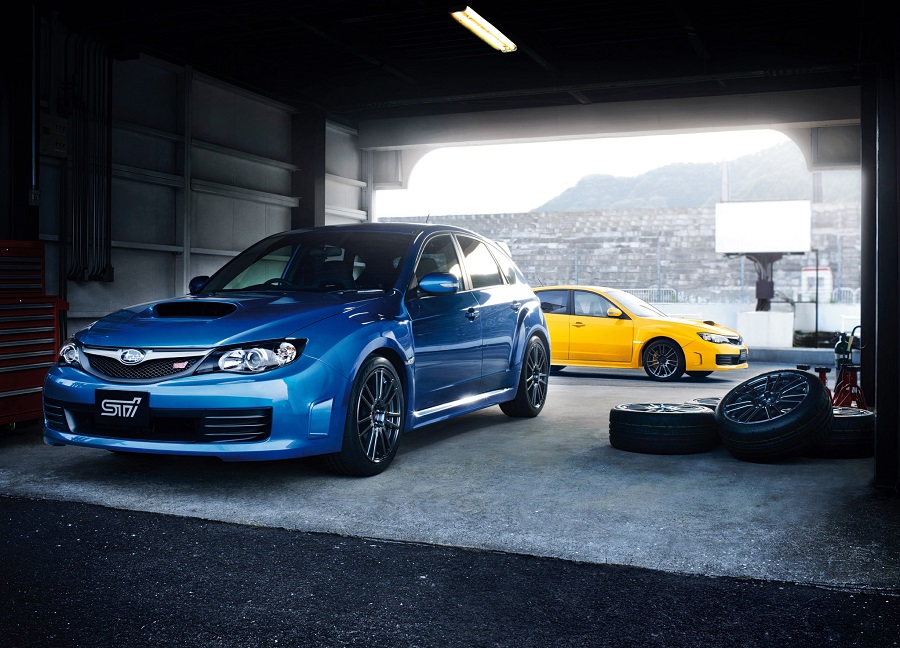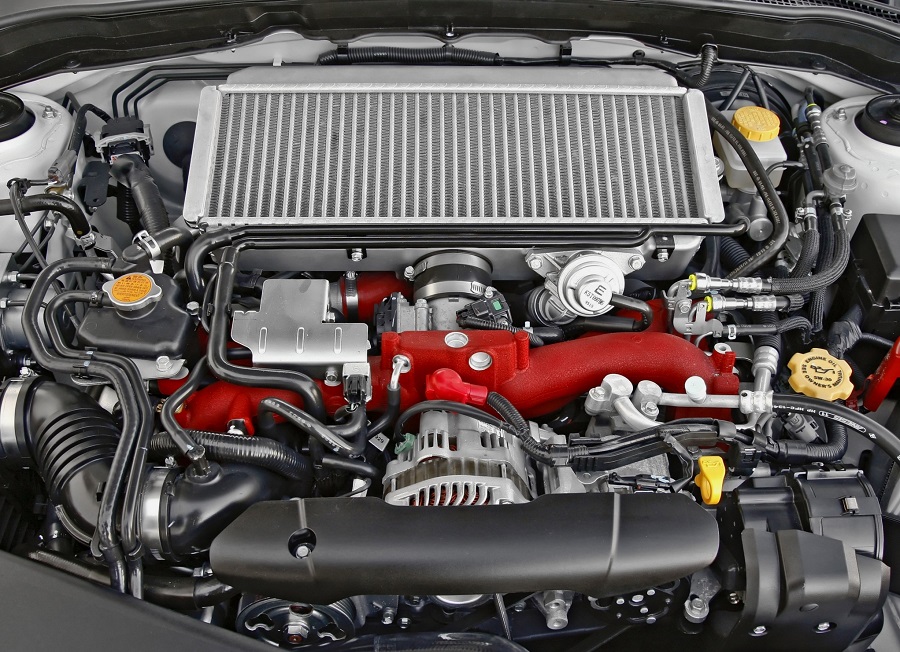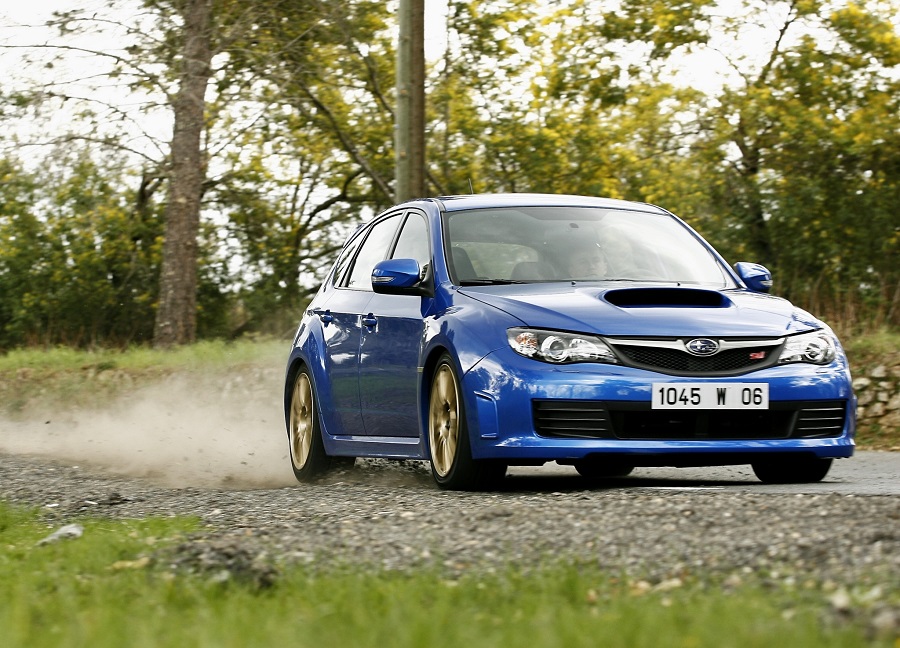Its softer hatchback body may have put off the purists, but the third generation Subaru Impreza WRX STI (GRB) remains a solid used market option.
Known for its scorching off-road racers that dominated the World Rally Championship in the ‘90s, Subaru’s road-going Impreza WRX STI models were just as iconic, offering performance car fans one of the fastest ways to get from A-to-B over everything from fast, flowing motorways to the most tortuous of twisty B-roads. Tuners were quick to jump on the bandwagon, making one of the fastest cars on the street even faster and allowing trackday enthusiasts to laugh in the face of much more exotic machinery.
Impreza Hatchback?
This beloved heritage meant that when Subaru changed the platform of its third-generation GRB model in 2007, switching from the iconic saloon to a more conservative hatchback profile, Impreza purists were far from impressed. The new car’s reception was especially harsh as the first models to hit the streets were the watered-down WRX variants, with drab styling and lacking the searing performance the Impreza was known for. When the STI finally arrived later in the year, however, things were immediately back on track, with much more aggressive styling, a wider hipped body, and a vastly more potent engine to boot.
Yes, the hatchback remained, but an all-new multi-link rear suspension system and a revised Driver Controlled Centre Differential incorporating Subaru’s Intelligent-Drive (SI-Drive) and adding three new drive modes – Intelligent, Sport and Sport sharp – meant it was as exhilarating as ever behind the wheel.
While the USA had to be content with just the one STI variant, Japan and the UK enjoyed numerous limited-editions including a 2008 20th Anniversary Edition WRX STI, a rally-based WRX STI spec C, a WRX STi 330S, a WRX STI R205, a Litchfield Type-20 and most potent of all, the Cosworth WRX STI CS400. While all US and UK variants used the 2.5-litre EJ25 engine, Japanese models used a more potent, yet often more reliable, 2.0-litre EJ20 engine.

Most common problems
- Piston ring-land failure – Ring-land failure is a semi-common issue affecting certain Subaru STI engines. The problem occurs when the groove that holds the piston rings fractures and breaks, causing the piston to become damaged. This can lead to a number of engine problems, including smoke out of your exhaust, loss of power, poor idling quality, and loss of compression.
- Rod bearing failure – Due to the design of the boxer engine’s sump, under hard cornering, engine oil can be forced away from the oil pick up, leading to oil starvation and eventually rod bearing failure, which presents itself as a knocking sound from the engine which can be heard when idling which gets louder when on the move. The problem is exacerbated by low oil levels caused by oil leaks and/or a lack of maintenance and regular checks and top-ups.
- Oil leaks – The STI’s 2.5-litre flat-four engine is known to suffer from oil leaks, the most common being from the valve cover gaskets, the crank seal and the rear of the engine, where your PVC baffle plate is located. Be sure to check levels regularly and top up when necessary, while also visually inspecting the engine for signs of oil leaks and for any oil spots under the car after being parked up for a while.
- Head stud failure – The EJ25 engine’s head studs are known to stretch under high loads and can over time reduce the clamping pressure, leading to the cylinder heads lifting and causing the system to pressurise and overheat, weakening pistons and rings and increasing oil consumption.

Pros vs Cons
Pros:
- 5-litre turbocharged boxer engine gives plenty of shove in standard trim with scope for much more power when tuned
- Rally-hewn handling from the excellent all-wheel-drive system means back roads are a blast and few other road users are able to keep up
- Hatchback practicality and a host of aftermarket styling options has meant even die-hard Subaru fans have grown to love the firm’s hot hatch hero
Cons:
- Engines can be fragile if not meticulously maintained or have suffered from inexperienced tuning upgrades, with big bills likely if they fail
- High road tax brackets and fuel consumption levels means even the most basic of running costs can be eye-wateringly expensive
- The interior features low quality plastics and cheap-looking trim that is well below the standard of many of its direct rivals

Model timeline
- 2007 – Launch of third-generation Impreza WRX STI with UK and USA receiving hatchback model rather than the saloon model of Japan
- 2008 – Subaru announces it is exiting the WRC in December
- 2009 – Subaru launch 326bhp UK STI 330S and Japan-only Spec C homologation special
- 2010 – UK Impreza WRX STI hatch now available with 320bhp and sat nav as standard, Cosworth Impreza STI CS400 launched in May, Impreza name dropped for Subaru WRX STI in October. Along with the new name, the car gets a minor facelift too.
- 2011 – Fourth-generation WRX STI saloon briefly returns to UK range
- 2012 – Subaru UK no longer import the WRX STI model to the UK, due to lack of demand

Engine
The STI’s 2.5-litre turbocharged boxer flat four is a potent lump from the factory boasting 300bhp and 300lb ft of torque. This endows the STI with a 155mph top speed and a 0-60mph time of 4.8-seconds. These are all figures that can radically improved in the hands of an experienced tuner, however, it can be a fragile unit. Piston failures (ring land fractures) on the 2.5-litre engine are quite common – both on WRX and STI hatchbacks. Some owners have had new short-block engine replacements, whilst others have gone for a bespoke engine rebuilds with forged pistons – budget around $3,000 / £2,500 for this. Proper custom ECU mapping (around $500 / £500) may prolong standard engine life – some UK cars had this done from 2008-on under warranty by Subaru, so ask the seller if this or any other mapping has been carried out.
Oil starvation, through leaks, g-forces when cornering or a general lack of maintenance, can also be problematic, with a host of expensive issues arising such as rod bearing and turbocharger failures due to a lack of essential lubrication. When viewing a potential purchase, look for signs of oil leaks as well as smoke from the exhaust, listen for any knocking noises from the engine or whining from the turbocharger and be vigilant for any hesitation, miss-fires or a lack of power under load while on the test drive. Also, be sure to check the oil level and quality and that there is no traces of oil in the coolant. Oil should be a golden color with no metallic particles, while coolant should have no traces of creamy mayonnaise-like deposits.
EJ207 engine
While the US and UK variants of Subaru’s Impreza WRX STI hatch received the 2.5-litre EJ25 engine, car’s destined for the Japanese market used an evolution of the tried and tested 2.0-litre EJ20 engine, which had been the staple base lump used in Subaru’s hottest Imprezas since the model was first launched in 1992. Designated EJ207 in the GRB hatch, it is fitted with a twin scroll turbocharger making 305bhp and 311lb ft of torque.
This smaller displacement unit was not only more potent than its larger sibling, but also more reliable, an attribute thought to be a by-product of the engine’s thicker block cylinder sleeves which offer greater protection to the engine’s bore, as well as a better capability of cooling off the cylinder block when compared to the 2.5-litre turbo engines. Like all Impreza engines, the EJ20 responds very well to careful and considered tuning with power figures well over 500bhp readily achievable if you have deep enough pockets.

Transmission
The STI’s six-speed transmission is extremely tough but won’t last forever on highly-modified car. The standard clutch also seems strong, but do check for slipping on high-milers. Tuned versions should also have an uprated clutch, which will be needed to handle the increased torque, and are often noticeable by way of a heavier pedal feel and a more abrupt engagement. Compared to other hot hatches, the shift will likely feel notchy and agricultural but this is completely normal and you will soon get used to the precise action, but all gears should select without any grinding or obstruction.

Chassis
Suspension
Ride quality on both 17 and 18in factory wheels is relatively compliant on the hatchback, but this increased comfort results in a lack of some of the immediacy and razor-sharp handling response that the earlier generations were known for, so don’t be surprised if an owner has fitted uprated suspension such as coilovers to unlock the car’s full potential. Bushes can also wear out, especially anti-roll bar bushes, and those at the top of the strut mounts. On the test drive and viewing, make sure there is no creaking or knocking from the steering at full lock and that there is no visible oil misting or leaking around the dampers, which would suggest they are on their way out.
Brakes
The STI has meaty Brembo brakes from the factory, which are strong enough for both fast road use and even the occasional trackday, resisting fade well and remaining consistent even after heavy use. Uprated pads can offer greater improvements but can mean more dust which will be evident on the wheels after even a short run. The rear calipers are known to stick if the car is left standing for any length of time, so feel for any slight dragging from the brakes when pulling away or coming to a stop, as they may need a rebuild to free them off. On the test drive, it’s also worth doing a few hard braking runs. A vibration through the pedal or steering wheel suggests warped discs, while puling to one side or the other may indicate a caliper or brake line issue.

Wheels & Tires
As standard most cars will come with either 17 or 18in alloy wheels, which are largely corrosion free, but any potential purchase should be carefully checked for signs of curbing or damage, which could indicate a careless owner or some unintentional off-road activity. Examples with aftermarket wheels are not uncommon, just ensure that all four wheels and tires are the same size as this is essential for the four-wheel drive system to operate properly without issue.
Look for a premium tire brand with plenty of tread depth that is equally worn across the tire’s surface on all four wheels, as this can often indicate that the owner has not skimped when it comes to regular maintenance such as alignment and tire replacement. Finally, if the wheels are larger than standard (either width, diameter or both), or the car has been substantially lowered, ensure that there is no scrubbing or catching on the bodywork, even on full lock.

Prices
Overall, there isn’t really that much difference in price between the pre-and-post-facelift cars. So, for this price guide, we’ll consider them equals. In the US, expect to pay between $12,500-$35,000 for a WRX STI GRB. However, over in the UK, these cars will you set back somewhere between £8,500-£15,000.
The British special editions aren’t quite so cheap though, sadly. We found a 330S priced at £23,200 (admittedly with just 36,000 miles on the clock), a Spec-C for £24,995, a Litchfield Type 20 for £27,995, and a CS400 Cosworth for £30,250.
Interested in purchasing one of these cars? See if the folks at Car Gurus can help you out.
Words by Dan Sherwood.





